DNA reveals the past and future of coral reefs
New DNA techniques are being used to understand how coral reacted to the end of the last ice age in order to better predict how they will cope with current changes to the climate. James Cook Univer

From 2005 to 2022, the main node of the ARC Centre of Excellence for Coral Reef Studies was headquartered at James Cook University in Townsville, Queensland (Australia)
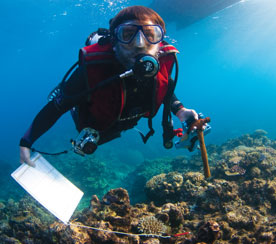
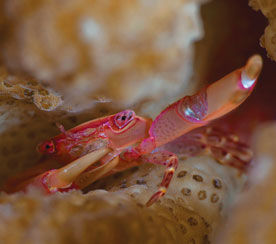
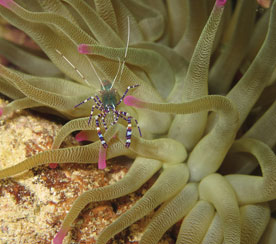
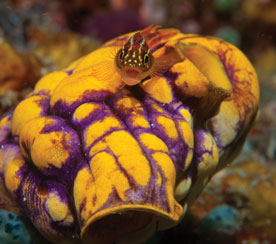

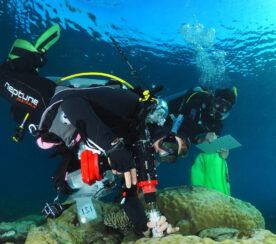
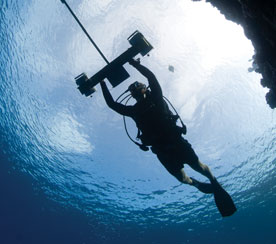

Abstract: Due to its prevalence in humans, pair bonding among other vertebrates has been a topic of significant interest and research. Important insights have been gained into the neural (proximate) and adaptive (ultimate) basis for pair bonding in mammals. However, little is known about the evolution of pair bonding in earlier vertebrates. In my PhD thesis, I used coral reef butterflyfishes (family: Chaetodontidae) as a model system for exploring the neural and adaptive basis of pair bonding in ray-finned fishes. I began by establishing functional and comparative model systems for undertaking neural research (Chapter 1). Using these model systems, I then tested the involvement of neurochemical-receptor systems that govern mammalian pair bonding in fish pair bonding (namely the oxytocin-like (isotocin, IT), arginine vasopressin-like (arginine vasotocin, AVT), dopamine, and opioid systems) showing that blocking these systems reduces pair bonding. In order to explore the brain regions in which these systems might act to exert this effect, I then compared receptor gene expression within key socio-functional brain regions between paired and solitary individuals. I found that pair bonding was associated with higher IT and AVT V1a receptor gene expression within the Vv/Vl of females but not males, and lower D1, D2, and mu-opioid receptor gene expression within several regions that mediate social and reward behavior, in both sexes. My results show that the regulatory network governing butterflyfish pair bonding is similar to that of mammalian counterparts, suggesting that the paralleled evolution of vertebrate pair bonding has relied on repeatedly co-opting “deep” neurochemical and anatomical homologies that were already established in early vertebrates ~ 420 MYA (Chapter 2). In my final chapter, I explore the adaptive function of butterflyfish pair bonding; I used comparative and experimental approaches to show that pairing bonding in butterflyfishes appears to have both a reproductive and non-reproductive basis, where pairing confers marginal gains in territory defense and foraging performances that increase with partnership endurance, providing an evolutionary incentive for partner permanency. Overall, my research generates important insight into the evolution of pair bonding in ray-finned fishes, and more broadly suggests that while the adaptive function of vertebrate pair bonding may be variable, the governing neural network has evolved largely in parallel throughout ~420 million years of evolution.
Bio: Jessica’s passion for marine biology has taken her far from her land-locked origins of Wisconsin, USA. While earning her undergraduate degree in psychology and biology, she was awarded a NSF REU scholarship to travel to Shannon Point Marine Centre, Washington, USA, where she examined the effects of ocean acidification on temperate invertebrates. Afterwards, she earned her graduate diploma (with honours) in marine science from James Cook University, Australia, during which time she researched the interactive effects of increased sea surface temperature and ocean acidification on the behaviour of coral reef fishes. In 2012, Jessica was awarded a scholarship to undertake a Ph.D. within the ARC Centre of Excellence for Coral Reef Studies. After watching a transformative TED talk on the role of the “moral molecule”, oxytocin, in governing pair bonding and other forms of pro-sociality in humans and other mammals, Jessica immediately decided upon her thesis topic: to explore whether oxytocins’ role in governing pair bonding is evolutionarily ancient within the vertebrate lineage. This interdisciplinary topic has awarded her the opportunity to conduct her research between the Centre, Australia (supervised by Prof. Morgan Pratchett, and Drs. Stefan Walker and Andrew Hoey) and Harvard University, USA (supervised by Dr. Lauren O’Connell). She is also co-supervised by Assoc. Prof. Michael Berumen of KAUST University, Saudi Arabia.
New DNA techniques are being used to understand how coral reacted to the end of the last ice age in order to better predict how they will cope with current changes to the climate. James Cook Univer
A new study on the effects of climate change in five tropical countries has found fisheries are in more trouble than agriculture, and poor people are in the most danger. Distinguished Profess
James Cook University researchers have found brightly coloured fish are becoming increasingly rare as coral declines, with the phenomenon likely to get worse in the future. Christopher Hemingson, a
Researchers working with stakeholders in the Great Barrier Reef region have come up with ideas on how groups responsible for looking after the reef can operate more effectively when the next bleaching
Abstract: As marine species adapt to climate change, their heat tolerance will likely be under strong selection. Individual variation in heat tolerance and its heritability underpin the potential fo
Abstract: The Reef Ecology Lab in KAUST’s Red Sea Research Center explores many aspects of movement ecology of marine organisms, ranging from adult migrations to intergenerational larval dispersal
Abstract: Macroalgal meadows are a prominent, yet often maligned component of the tropical seascape. Our work at Ningaloo reef in WA demonstrate that canopy forming macroalgae provide habitat for ad
Abstract: Sharks are generally perceived as strong and fearsome animals. With fossils dating back at least 420 million years, sharks are not only majestic top predators but they also outlived dinosa
Abstract: Connectivity plays a vital role in many ecosystems through its effects on fundamental ecological and evolutionary processes. Its consequences for populations and metapopulations have been
Abstract: Evolution of many eukaryotic organisms is affected by interactions with microbes. Microbial symbioses can ultimately reflect host’s diet, habitat range, and even body shape. However, how
Abstract: The past few years have seen unprecedented coral bleaching and mortality on the Great Barrier Reef (GBR) but the consequences of this on biodiversity are not yet known. This talk will expl